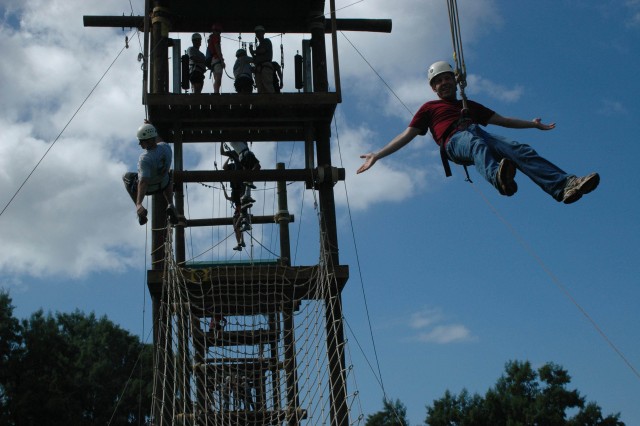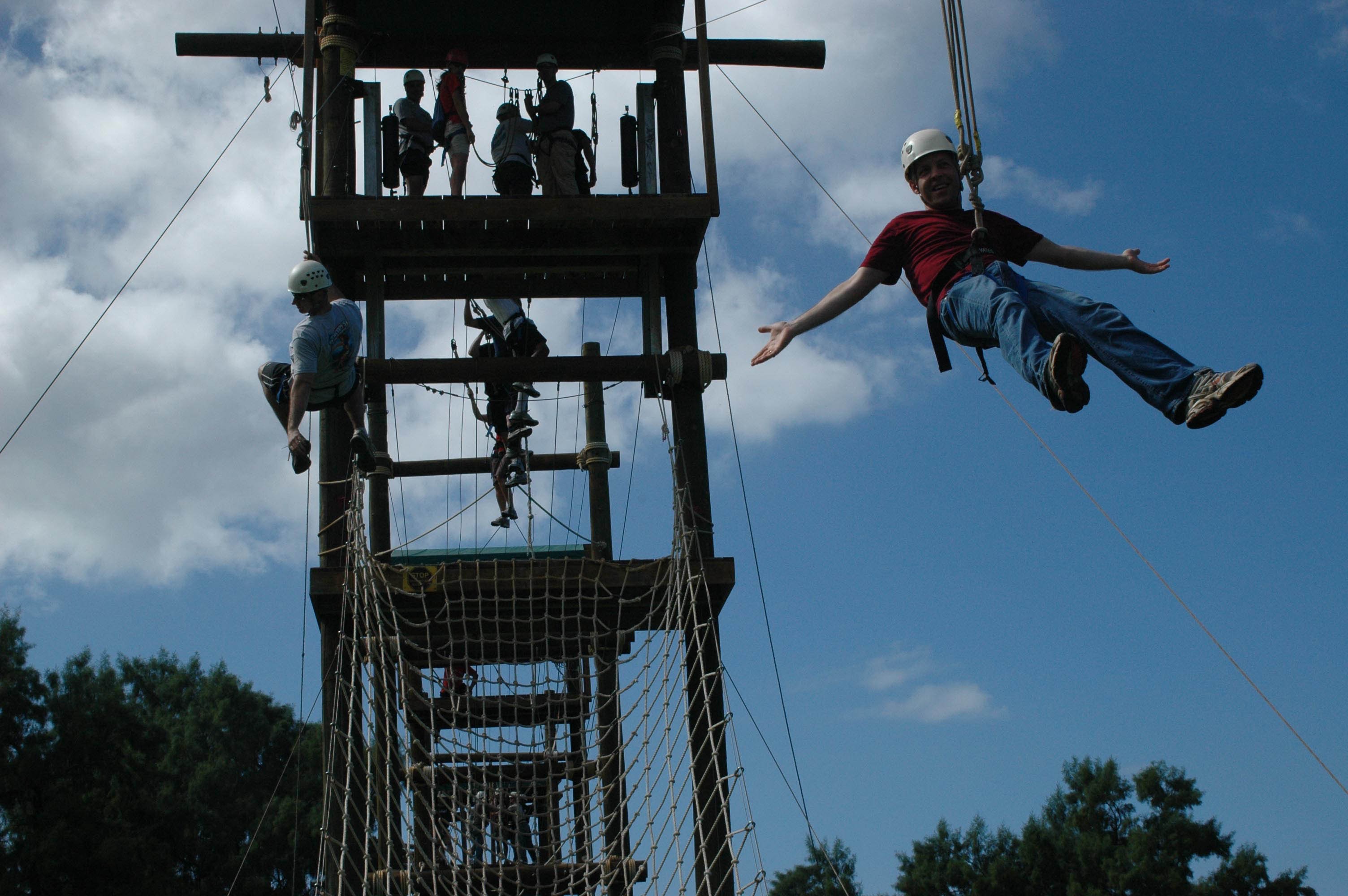
SCHOFIELD BARRACKS, Hawaii Aca,!" Soldiers will get an opportunity to release a bit of post-deployment steam through a couple of high-paced, high-adrenaline activities scheduled during the next few months.
The Warrior Adventure Quest (WAQ) program, which kicked off last week at sites around Oahu, is limited to service members from the redeployed 25th Infantry DivisionAca,!a,,cs 3rd Infantry Brigade Combat Team and Headquarters, here, as well as the 8th Theater Sustainment Command at Fort Shafter.
Meanwhile, an advanced motorcycle training course called Aca,!A"Train as You Ride,Aca,!A? tentatively scheduled for the middle of December, is open to all Soldiers, although priority is given to those returning from downrange.
For WAQ participants, the outdoor activities are seen as a way to partner extreme-type sports with behavioral health concepts, all the while allowing Soldiers to transition safely from the combat environment back into garrison or Aca,!A"homeAca,!A? life.
Aca,!A"This is a reintegration tool for us,Aca,!A? said Conor Joyce, recreation specialist and programs manager for the Outdoor Recreation Center, of the still-fledgling WAQ program. Aca,!A"From the reviews weAca,!a,,cre getting, the Soldiers are saying how much they enjoy and appreciate it.Aca,!A?
The program is composed of three, all-day activities: a high- and low-ropes course at Kaena Point; paintball games on the Windward side of the island, at Marine Corps Base Hawaii, Kaneohe Bay; and an ocean adventures course, stand-up paddling, surfing, kayaking and scuba diving, at various spots around Oahu.
In addition, Soldiers will have the opportunity to interact with behavioral health liaisons at these high-adventure activities.
Aca,!A"What that does is provide another avenue to introduce the health services available to these Soldiers,Aca,!A? Joyce explained. Aca,!A"Communicating with the Soldiers on a one-on-one basis, or in small groups, is much more effective than sitting in a big auditorium and watching a PowerPoint presentation.Aca,!A?
Some 3rd IBCT Soldiers actually chose to begin the program last week as part of their redeployment cycle, Joyce said. The majority of the service members, however, will dive headlong into these activities beginning in January, following an already scheduled block-leave period.
Aca,!A"The nice benefit to this program is that it teaches Soldiers about an activity they may have never been involved with before,Aca,!A? Joyce said. Aca,!A"Also, these activities are repeatable, Soldiers who go out on a paintball course, for example, can always come back and paintball with us on a weekly basis, or for however often they feel like doing it. And the same goes for the ocean adventures course.
Aca,!A"Our Soldiers can come back and most of the equipment is available at our checkout center or through some of our other programs,Aca,!A? he added.
Those who enroll in the upcoming motorcycle training course will get the opportunity to refine their road skills on a larger-than-ordinary circuit course at Wheeler Army Airfield.
Aca,!A"Soldiers will need to have a few miles under their belts to ride,Aca,!A? explained Bill Maxwell, a safety specialist for the Directorate of Installation Safety, U.S. Army Garrison-Hawaii. Aca,!A"This is an add-on course, meaning it will give them additional training that goes beyond what the Army requires.Aca,!A?
While most Motorcycle Safety Foundation courses come equipped with a standard track that limits speeds to between 15 and 30 mph, participants in this course will have the green light to reach speeds of up to 60 mph, Maxwell said. Riders will also have the benefit of repeating the circuit course numerous times, he added, with each curve on the track designed to enhance different skill-sets.
Motorcycle riders will work with seasoned instructors from the California SuperBike School, one of the most prestigious motorcycle track academies in the world.
Aca,!A"These teachers are very skilled at coaching the little nuances of motorcycle riding,Aca,!A? Maxwell said.
Tentatively scheduled for Dec. 16 and 17, the motorcycle course is funded through U.S. Army-Pacific (USARPAC). Following the course in December, three more classes are scheduled to run sometime between January and August of 2010.
The WAQ program is centrally funded through the ArmyAca,!a,,cs Family and Morale, Welfare and Recreation (FMWR) Command, with oversight conducted by the Installation Management Command and regional FMWR recreation managers.
The Army launched WAQ at a few pilot sites around the world in 2008, before implementing the program in earnest in January. Since then, units of up to 30 Soldiers, including about 750 Soldiers from the 2nd Stryker Brigade Combat Team at Schofield Barracks, have taken part in the activities.
(EditorAca,!a,,cs Note: This article ran in the Hawaii Army WeeklyAca,!a,,cs redeployment insert, which was published Nov. 20. To see the entire insert, click <a href="http://www.garrison.hawaii.army.mil/HAW/Nov2009/Haw%2020Nov09.pdf">here</a>. The insert starts on page 14.)

Social Sharing